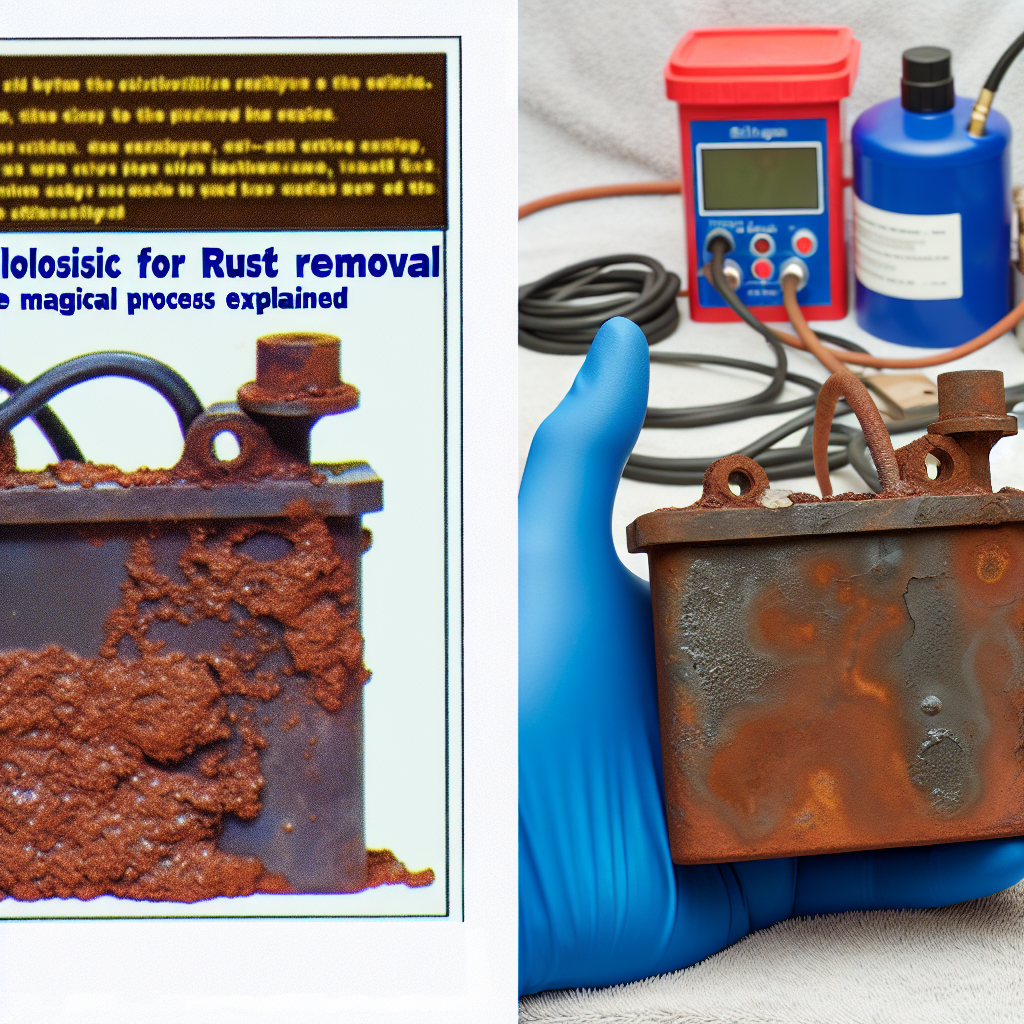Rust removal can often be a tedious and labor-intensive process, but recent advancements have revolutionized the way enthusiasts and professionals approach this challenge. **Electrolysis**, a technique harnessing electrical currents to break down rust, has gained popularity thanks to its effectiveness and safety. In this article, we delve into the **magical process of electrolysis in rust removal** and explore a viral video showcasing it in action.
Understanding the Science Behind Electrolysis for Rust Removal
Electrolysis is a process rooted in chemistry that utilizes an electrical current to initiate a chemical reaction. When applied to rusted metal objects, this method effectively transforms **iron oxide (rust)** back into its original metal form. The process involves submerging the rusty item in a conductive solution, typically a baking soda or washing soda solution, and connecting it to a power source with alligator clips.
- Anode (positive terminal): Usually a sacrificial electrode, often made from scrap metal or carbon, which attracts rust particles.
- Cathode (negative terminal): The rusty object itself, where rust is reduced and converted back to metal.
By passing an electric current through the solution, electrons are moved, causing rust particles to detach from the metal surface. This process results in a clean, rust-free object without abrasive scrubbing or harsh chemicals—a highly **effective and environmentally friendly** solution.
The Practical Application and Benefits of Electrolysis
The viral video demonstrating electrolysis showcases how this process can be applied to various objects, from antique tools to automotive parts. Its simplicity and safety appeal to DIY enthusiasts, as it requires minimal equipment and produces minimal mess. Some of the **notable benefits** include:
- Preservation of delicate surfaces: Unlike sanding or chemical rust removers, electrolysis is gentle and preserves intricate details.
- Cost-effectiveness: Basic supplies like a power supply, a container, and electrolyte solutions are inexpensive.
- Eco-friendliness: No toxic chemicals are involved, making it safer for both users and the environment.
The process can be scaled from small hobby projects to larger restoration tasks, making it versatile for various applications. Watching the viral video, viewers can witness how easily rust is transformed into clean metal, revealing the **true magic of electrolysis** in rust removal.
Conclusion
Electrolysis offers a powerful, safe, and eco-friendly method for removing rust, making restoration projects more accessible and effective. By understanding the science behind it and observing practical applications like the viral video, enthusiasts can confidently approach rust removal with a modern technique that saves time and preserves their objects. Embrace electrolysis and unlock the potential of your rusty items!
